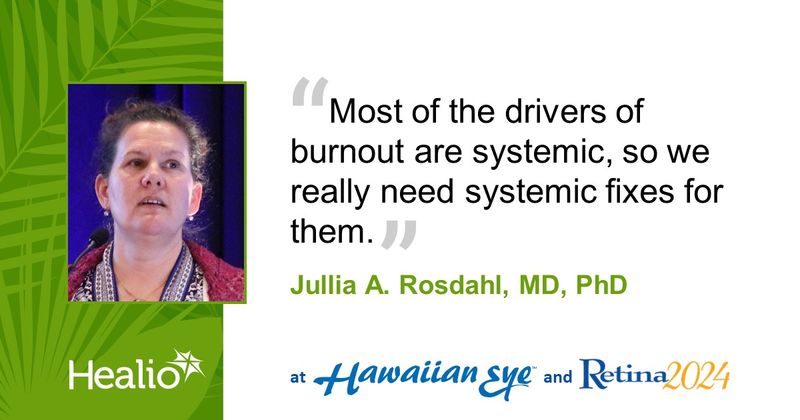Promoting physician wellness requires systemic changes in ophthalmology
WAILEA, Hawaii — Mitigating physician burnout in ophthalmology requires proactive measures, according to a presenter here.
“This burnout crisis isn’t our fault. We didn’t cause it as physicians, and so we can’t really expect to fix it ourselves by just doing yoga and meditating,” Jullia A. Rosdahl, MD, PhD, said at Hawaiian Eye/Retina 2024.

Promoting physician wellness involves taking proactive steps to foster a sense of community in the clinic, she said, noting that at her institution this include an annual party with all staff members, including fellows, technicians, faculty and researchers.
Another important effort to contend with stress-inducing workplace inefficiencies is to promote targeted interventions.
“If somebody has an idea of something to try, try it. See how it works, and then share it,” she said. “There isn’t a one size fits all, and so we need to try different things and share what’s working and what’s not working so we can move the needle for all of us.”
In addition, when aspiring to their own individual wellness goals, ophthalmologists should follow the “ABCs of self-care”: awareness, boundaries and community.
Rosdahl said awareness of stress inducers is important to work toward a solution. It is also important for physicians to set strict boundaries to protect their personal values and time away from work and to create an environment built on communication to mitigate loneliness.
“Most of the drivers of burnout are systemic, so we really need systemic fixes for them,” Rosdahl said. “And we as leaders can be a part of that change and, really, need to be a part of it.”

